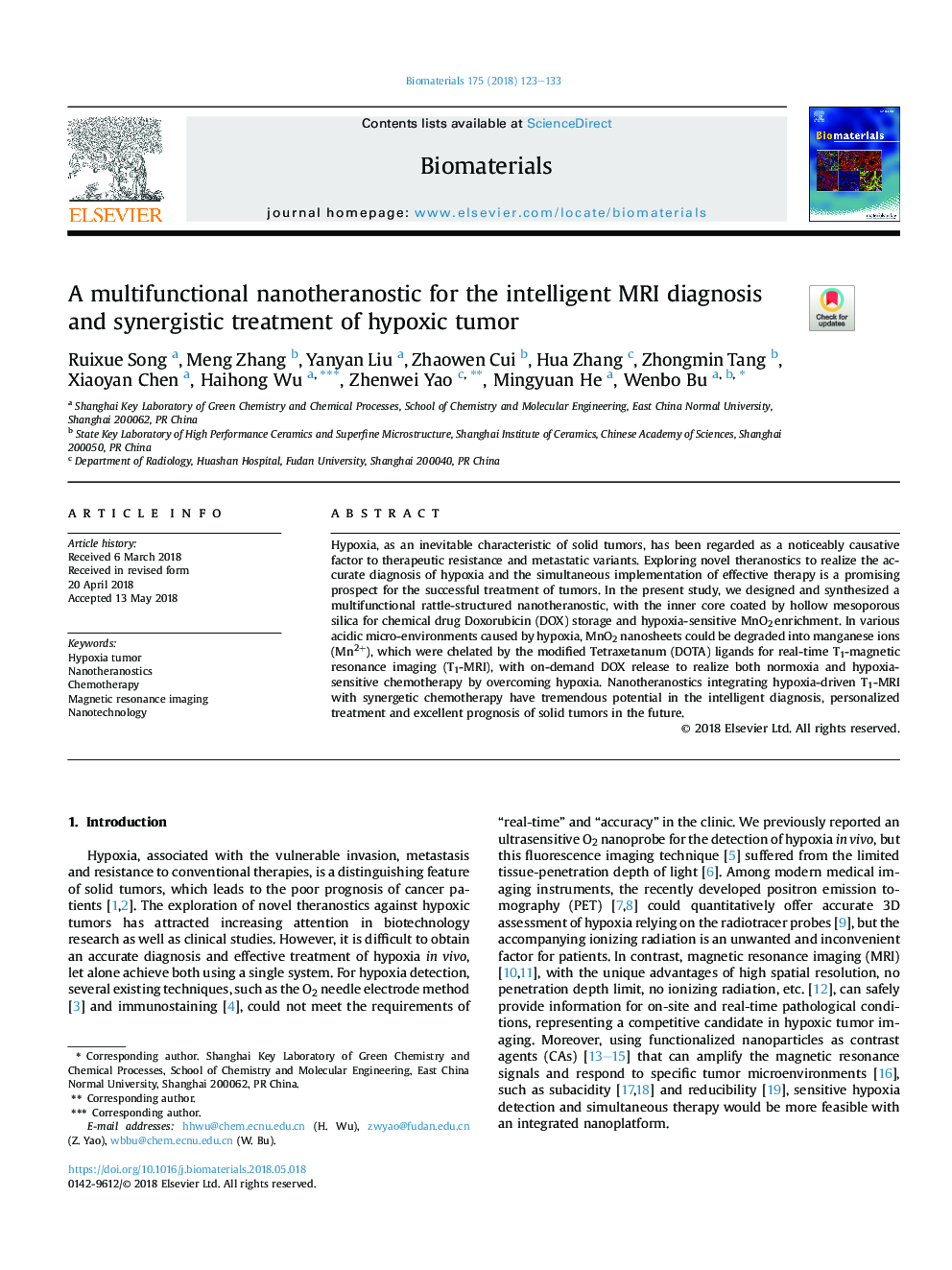| Article ID | Journal | Published Year | Pages | File Type |
|---|---|---|---|---|
| 6484454 | Biomaterials | 2018 | 11 Pages |
Abstract
Hypoxia, as an inevitable characteristic of solid tumors, has been regarded as a noticeably causative factor to therapeutic resistance and metastatic variants. Exploring novel theranostics to realize the accurate diagnosis of hypoxia and the simultaneous implementation of effective therapy is a promising prospect for the successful treatment of tumors. In the present study, we designed and synthesized a multifunctional rattle-structured nanotheranostic, with the inner core coated by hollow mesoporous silica for chemical drug Doxorubicin (DOX) storage and hypoxia-sensitive MnO2â¯enrichment. In various acidic micro-environments caused by hypoxia, MnO2 nanosheets could be degraded into manganese ions (Mn2+), which were chelated by the modified Tetraxetanum (DOTA) ligands for real-time T1-magnetic resonance imaging (T1-MRI), with on-demand DOX release to realize both normoxia and hypoxia-sensitive chemotherapy by overcoming hypoxia. Nanotheranostics integrating hypoxia-driven T1-MRI with synergetic chemotherapy have tremendous potential in the intelligent diagnosis, personalized treatment and excellent prognosis of solid tumors in the future.
Related Topics
Physical Sciences and Engineering
Chemical Engineering
Bioengineering
Authors
Ruixue Song, Meng Zhang, Yanyan Liu, Zhaowen Cui, Hua Zhang, Zhongmin Tang, Xiaoyan Chen, Haihong Wu, Zhenwei Yao, Mingyuan He, Wenbo Bu,
